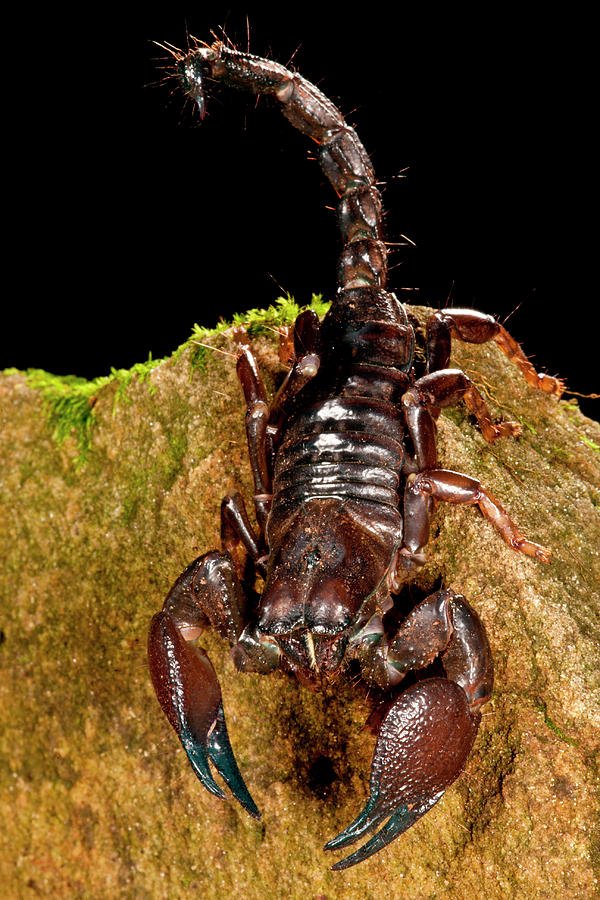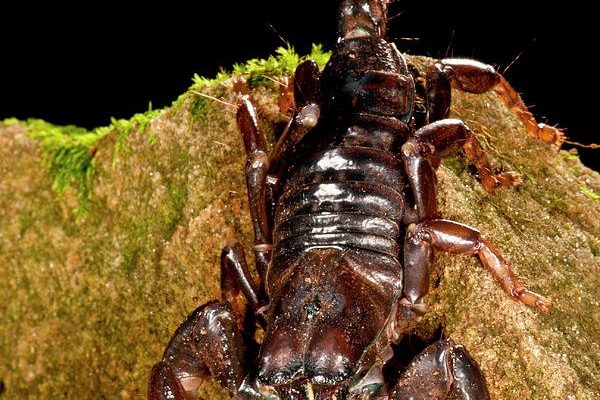
Imagine a bustling city, where everyone has a job that keeps everything running smoothly. Now, picture a similar scene in the wild, but instead of people, we have animals, plants, and even tiny critters like the Red Claw Scorpion. They all live in harmony, each playing their part. So, let’s talk about this scorpion’s role in nature and ecosystems, and why it matters more than you might think.
What is the Red Claw Scorpion?
The Red Claw Scorpion (Urodacus manicatus) hails from the dry regions of Australia and is known for its distinctive red claws. These scorpions, often found in arid environments, are typically nocturnal, which means they prefer to come out and play when the sun goes down. This behavior protects them from daytime predators and helps them hunt more effectively for food.
You might be wondering why their claws are red. It’s not just for show! The color can help them blend into their surroundings, providing extra camouflage when they’re on the hunt or trying to avoid being eaten. Their size can range from around 2 to 4 inches long, making them relatively small compared to other scorpion species. But don’t let their size fool you; they can be quite the tough customers!
The Predator-Prey Dynamic
Let’s dig into the predator-prey dynamic in which the Red Claw Scorpion plays a crucial role. These scorpions are primarily insectivorous, meaning they feast on various insects such as crickets and beetles. By controlling insect populations, they help maintain a balanced ecosystem.
When insects are plentiful, scorpions thrive, and when their population decreases, so does the scorpion population. This natural ebb and flow ensure that no single species takes over the ecosystem. Think of it as a high-stakes game of chess, where each player’s move affects the other. If scorpions didn’t keep insect populations in check, those insects could explode in numbers, leading to overgrazing of plant life and other ecological imbalances.
Soil Health and Nutrient Cycling
You might not think a scorpion has much to do with soil health, but they actually play a part in nutrient cycling. When they hunt and consume insects, they’re not just filling their bellies; they’re also contributing to the breakdown of organic matter. As they digest their food, they release nutrients back into the soil through their waste.
This process enriches the soil, making it more fertile for plants to grow. Healthy plants, in turn, support other species, from herbivores to apex predators. It’s all interconnected. Without scorpions doing their part, you could end up with weakened soil and struggling plant life—an ecosystem on the brink of collapse.
The Role of Scorpions in Food Chains
In any ecosystem, organisms are often part of larger food chains or food webs. The Red Claw Scorpion finds itself in the middle of this chain. They serve as both predators and prey. While they hunt insects, they also become food for animals like birds, lizards, and larger mammals.
This dual role is essential for the health of ecosystems. Scorpions help control insect populations while providing a food source for other animals. If there were too many insects, crops would suffer, and if scorpions vanished, many animals would lose a vital food source. It’s a delicate balance that supports a variety of life forms.
Scorpions and Biodiversity
Biodiversity refers to the variety of life in a certain habitat—in this case, the rich tapestry of organisms that make up a particular ecosystem. The Red Claw Scorpion contributes to this diversity in several ways. First, their presence indicates a healthy environment. A thriving scorpion population often means that the ecosystem can support it, which is good news for other species as well.
Additionally, they interact with a range of plants and animals, helping to maintain genetic diversity among species. This is crucial for adaptation and resilience in changing environments. Imagine a tree with deep roots; if one branch suffers, the whole tree might not fall. Similarly, ecosystems with high biodiversity are more robust against threats like climate change or disease.
Human Interactions and Conservation
Now that we’ve explored the fascinating roles of the Red Claw Scorpion in nature, let’s touch on how humans interact with them. Many people fear scorpions, but with a little understanding, we can appreciate their value. They can help control pest populations, which can be particularly useful in agricultural settings.
However, habitat destruction, climate change, and other human activities are threatening their populations. We need to consider conservation efforts to protect these vital creatures. Simple actions like preserving their habitats and reducing pesticide use can make a big difference. By doing so, we can ensure these scorpions continue to play their pivotal role in nature.
The Cultural Significance of Scorpions
Lastly, let’s not overlook the cultural significance of scorpions throughout history. Many cultures view them as symbols of strength and resilience, often appearing in myths and art. While their venom may seem daunting, they also remind us of the intricate balance of nature and the interconnected web of life.
In some indigenous cultures, scorpions are revered for their ability to thrive in harsh environments. They embody survival and strength, qualities that many people admire. By learning more about the Red Claw Scorpion, we not only gain insight into ecology but also into the rich tapestry of human beliefs and culture.
In conclusion, the Red Claw Scorpion is much more than an intimidating creature lurking in the shadows. It plays crucial roles in maintaining ecological balance, supporting soil health, and contributing to biodiversity. Through conservation efforts and a greater understanding of their importance, we can ensure that these fascinating creatures continue to thrive in their habitats. Let’s appreciate their presence in our ecosystems and recognize just how valuable they are.

